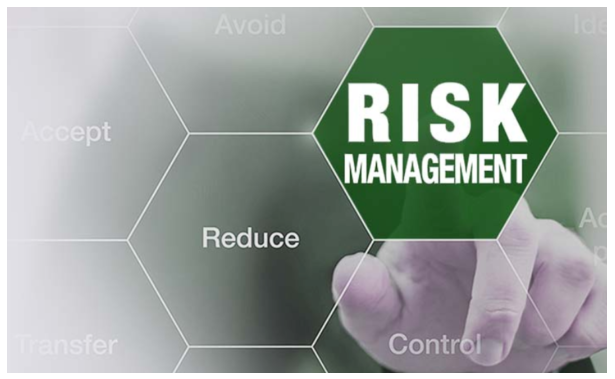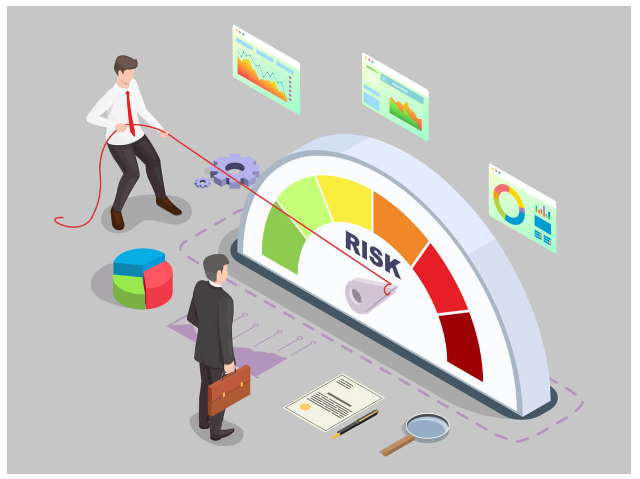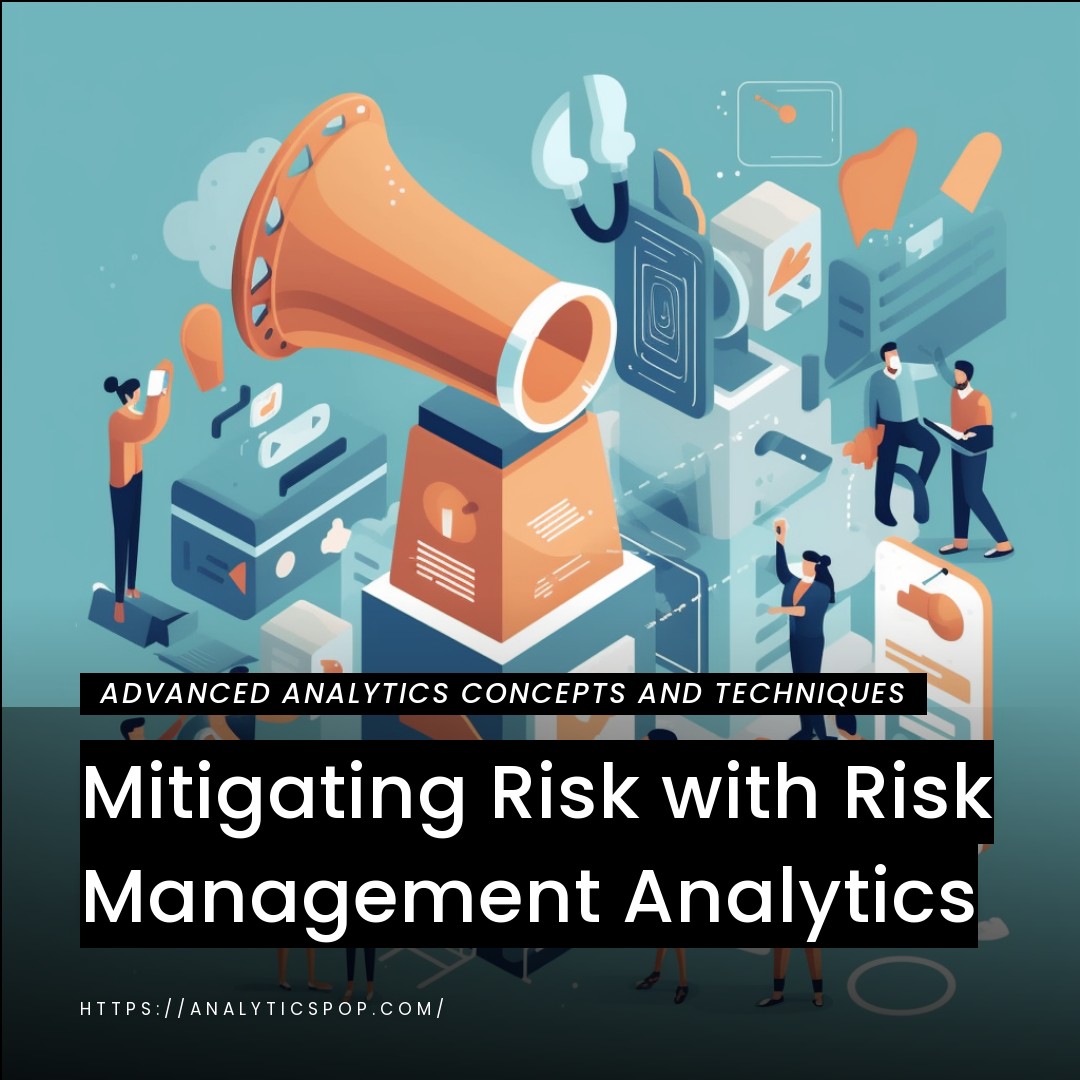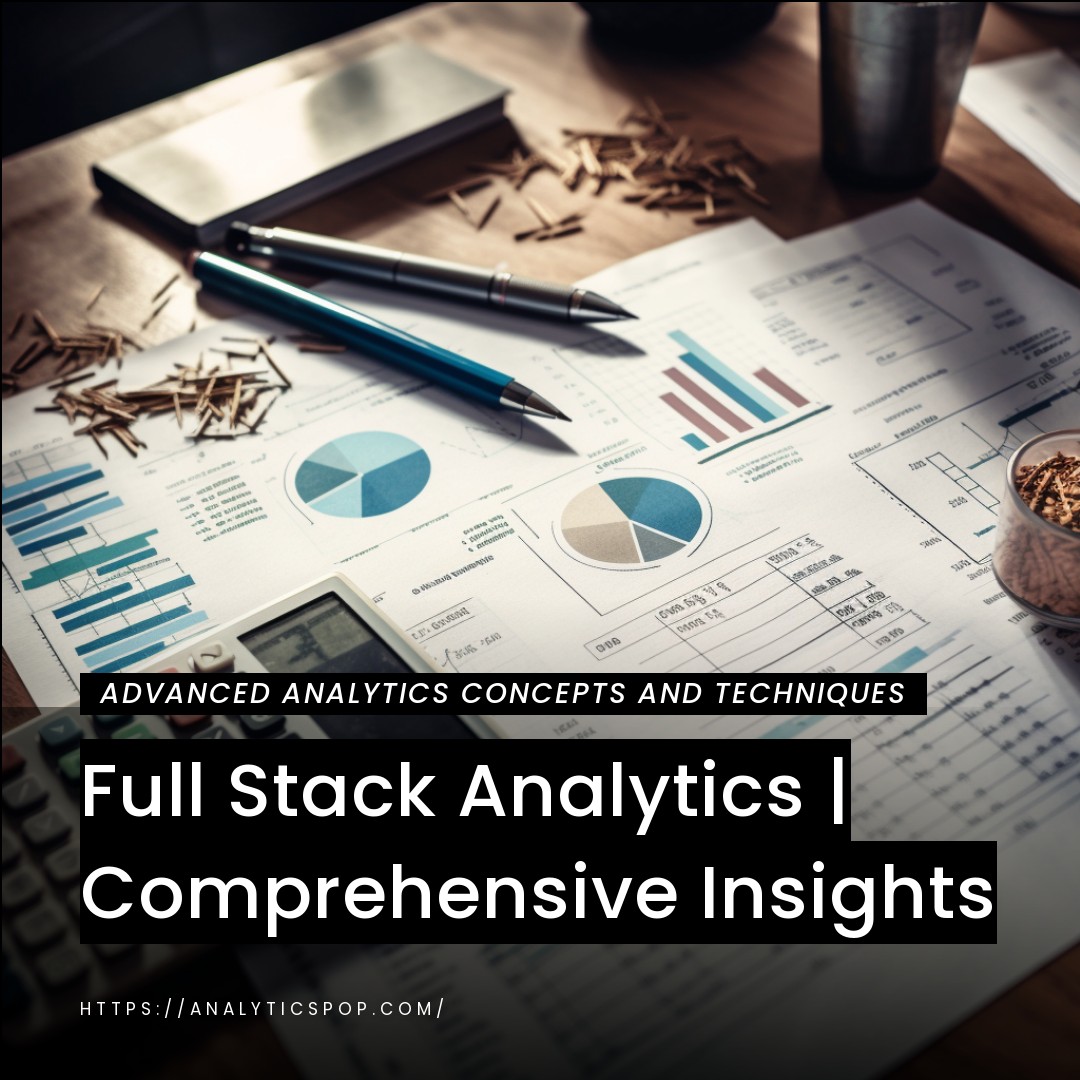Risk management analytics is a critical process that helps businesses mitigate potential risks and identify growth opportunities. It involves collecting, analyzing, and interpreting data to make informed decisions that can reduce the impact of adverse events and optimize outcomes.
To succeed with risk management analytics, businesses must follow best practices to use the correct data, tools, and techniques to make sound decisions.
- Businesses can focus on the most significant potential impact areas by setting clear objectives. One key best practice is establishing clear risk management analytics goals and objectives. This includes defining the scope of analysis, identifying relevant metrics, and determining the level of risk tolerance.
- Another critical best practice is to leverage technology and data analytics tools. Businesses can use various tools and techniques, such as predictive modeling, simulation, and data visualization, to analyze and interpret large data sets. These tools can help identify trends and patterns that may not be immediately visible and provide valuable insights to inform decision-making.
- It’s also crucial to establish a risk management culture within the organization. This means ensuring that all employees know the importance of risk management and are actively engaged in the process. By fostering a culture of risk awareness and encouraging open communication, businesses can identify and address potential risks early on.
- Finally, monitoring and evaluating risk management analytics strategies is essential. Businesses should regularly review their risk management processes and adjust their approach to ensure they align with the company’s evolving needs.
By following these best practices, businesses can mitigate risk and drive long-term success.
Why Use Risk Management Analytics?
Risk management analytics is crucial for businesses to manage risks effectively and make informed decisions. Risk management analytics involves collecting, analyzing, and interpreting data to identify potential risks and opportunities, allowing companies to take proactive measures to mitigate risks and capitalize on opportunities.
Here are some key reasons why businesses should use risk management analytics:
- Reduce Costs: By identifying and mitigating potential risks, businesses can reduce the financial impact of adverse events. This can help companies to save money and resources in the long run.
- Improve Decision-Making: Risk management analytics provides valuable insights that can inform decision-making. Businesses can make more informed and strategic decisions by analyzing data and identifying trends and patterns.
- Increase Efficiency: Risk management analytics can help businesses identify areas of inefficiency and implement solutions to streamline processes and reduce waste.
- Enhance Reputation: By proactively managing risks, businesses can build a positive reputation and establish trust with stakeholders, including customers, investors, and regulators.
- Drive Business Growth: By identifying opportunities and capitalizing on them, businesses can drive growth and increase revenue.
Risk management analytics is essential for businesses looking to manage risks effectively, make informed decisions, and drive long-term success.
Benefits of using risk management analytics, such as identifying and mitigating potential risks before they occur
Risk management analytics is a necessary process that helps businesses identify, assess, and mitigate risks before they occur. By collecting, analyzing, and interpreting data, companies can gain valuable insights into potential dangers and take proactive measures to prevent or minimize their impact.
Some of the key benefits of using risk management analytics include the following:
- Identifying and Mitigating Potential Risks: Risk management analytics can help businesses identify potential risks and develop strategies to mitigate them before they occur. This can reduce the financial impact of adverse events and prevent reputational damage.
- Improving Decision-Making: Risk management analytics can provide businesses with valuable insights that inform decision-making by analyzing data and identifying trends and patterns. This can help companies to make more informed, strategic decisions that drive long-term success.
- Enhancing Efficiency: Risk management analytics can help businesses identify areas of inefficiency and implement solutions to streamline processes and reduce waste. This can improve operational efficiency and reduce costs.
- Increasing Compliance: Risk management analytics can help businesses ensure compliance with legal and regulatory requirements. Companies can proactively prevent violations and avoid fines and penalties by identifying potential compliance risks.
- Boosting Business Growth: Risk management analytics can drive business growth and increase revenue by identifying and capitalizing on opportunities. Businesses can expand into new markets and increase market share by taking calculated risks.
Risk management analytics is essential for businesses looking to manage risks effectively, make informed decisions, and drive long-term success. By identifying and mitigating potential risks, improving decision-making, enhancing efficiency, ensuring compliance, and driving business growth, risk management analytics can help businesses achieve their goals and thrive in a competitive marketplace.

The limitations of traditional risk management methods
Traditional risk management methods are often based on subjective assessments of risks and rely on past experiences to predict future events. While these methods have effectively managed risks in the past, they have several limitations that can impede their effectiveness in today’s fast-paced and complex business environment.
Here are some of the limitations of traditional risk management methods:
- Lack of Accuracy: Traditional risk management methods rely on subjective assessments of risks, which can be prone to biases and errors. This can lead to accurate risk assessments and better decision-making.
- Limited Scope: Traditional risk management methods often focus on specific risks and fail to consider broader risks and systemic issues that can significantly impact the organization.
- Inflexibility: Traditional risk management methods often rely on rigid rules and procedures that can be difficult to adapt to changing circumstances. This can make it challenging to address new and emerging risks.
- Reactive Approach: Traditional risk management methods often focus on mitigating risks after they occur. This can be costly and may not effectively prevent or minimize the impact of adverse events.
- Lack of Integration: Traditional risk management methods often operate in silos and fail to integrate with other areas of the organization, such as finance, operations, and compliance. This can lead to disjointed risk management strategies and missed opportunities to identify and address risks.
Traditional risk management methods have several limitations that can impede their effectiveness in today’s complex business environment. To effectively manage risks, businesses must adopt more dynamic and integrated risk management strategies that leverage data, analytics, and technology to proactively identify and mitigate potential risks.
How risk management analytics can provide deeper insights into potential risks and drive business outcomes?
Risk management analytics is a powerful tool that can give businesses more profound insights into potential risks and drive business outcomes. By collecting, analyzing, and interpreting data, companies can gain a more comprehensive understanding of potential risks and take proactive measures to mitigate them.
Here are some ways that risk management analytics can provide deeper insights into potential risks and drive business outcomes:
- Predictive Analytics: Risk management analytics can use predictive analytics to forecast potential risks and assess their potential impact. This allows businesses to take proactive measures to prevent or mitigate threats before they occur, which can help reduce the financial impact of adverse events.
- Data Visualization: Risk management analytics can use data visualization to present complex risk data in a clear and understandable format. This can help businesses identify patterns and trends that may not be immediately apparent, which can inform decision-making and drive business outcomes.
- Scenario Analysis: Risk management analytics can use scenario analysis to assess the potential impact of different risk scenarios on the business. This allows companies to develop effective risk management strategies to minimize adverse events’ impact and drive better business outcomes.
- Real-Time Monitoring: Risk management analytics can use real-time monitoring to identify potential risks as they occur. This allows businesses to take immediate action to mitigate risks and prevent them from escalating into more significant issues that can negatively impact business outcomes.
- Optimization: Risk management analytics can use optimization to identify the best action to address potential risks. Businesses can make more informed decisions that drive better business outcomes by analyzing different options and their possible effects.
Risk management analytics gives businesses more profound insights into potential risks and can drive better business outcomes using predictive analytics, data visualization, scenario analysis, real-time monitoring, and optimization.
By leveraging risk management analytics, businesses can develop more effective risk management strategies that reduce the financial impact of adverse events and drive long-term success.
Key Metrics and Data Sources for Risk Management Analytics
Businesses must use the right metrics and data sources to effectively leverage risk management analytics to identify potential risks and make informed decisions. Here are some key metrics and data sources that companies can use for risk management analytics:
- Historical Data: Historical data is a valuable source of information for risk management analytics. By analyzing past events and trends, businesses can identify patterns and assess the likelihood of future events.
- Key Performance Indicators (KPIs): Businesses use quantitative measures to track performance and progress toward their goals. By monitoring KPIs related to risk management, businesses can identify potential risks and take proactive steps to mitigate them.
- Financial Data: Financial data, such as revenue, expenses, and cash flow, is a critical data source for risk management analytics. Businesses can identify potential financial risks and develop effective management strategies by analyzing financial data.
- Customer Data: Customer data, such as demographics, behavior, and feedback, can provide valuable insights into potential risks related to customer satisfaction and retention. Businesses can identify potential dangers by analyzing customer data and proactively addressing them.
- Industry Data: Industry data, such as market trends and competitor analysis, can provide valuable insights into potential market volatility and competition risks. By analyzing industry data, businesses can identify potential risks and develop effective strategies to manage them.
- Social Media Data: Social media data, such as customer sentiment and feedback, can provide valuable insights into the potential brand reputation and perceived risks. Businesses can identify potential dangers by analyzing social media data and proactively addressing them.
Leveraging a combination of historical data, KPIs, financial data, customer data, industry data, and social media data can provide businesses with a comprehensive understanding of potential risks and help them make informed decisions that drive better business outcomes.

Defining relevant risk management metrics, such as the likelihood and impact of risks
Defining relevant risk management metrics is critical for effective risk management analytics. Here are some key risk management metrics that businesses can use to assess potential risks:
- Likelihood: Likelihood refers to the probability of a risk occurring. By assessing the possibility of a chance, businesses can determine the level of attention and resources that should be dedicated to mitigating it.
- Impact: Impact refers to the potential consequences of a risk. By assessing the result of a threat, businesses can determine the severity and urgency of addressing it.
- Risk Exposure: Risk exposure refers to the total amount of risk a business is exposed to. Companies can identify areas where risk management strategies must be improved or implemented by measuring risk exposure.
- Risk Tolerance: Risk tolerance refers to the level of risk that a business is willing to accept in pursuit of its objectives. By defining risk tolerance, companies can determine the acceptable risk level and develop risk management strategies that align with their objectives.
- Key Risk Indicators (KRIs): KRIs are metrics that provide early warning signs of potential risks. By monitoring KRIs, businesses can identify potential threats before they escalate into more significant issues.
- Risk Mitigation Effectiveness: Risk mitigation effectiveness refers to the point of risk management strategies in mitigating potential risks. By measuring risk mitigation effectiveness, businesses can determine the effectiveness of their risk management strategies and identify areas where improvements can be made.
Defining relevant risk management metrics, such as likelihood, impact, risk exposure, risk tolerance, KRIs, and risk mitigation effectiveness, is crucial for effective risk management analytics. Businesses can use these metrics to assess potential risks, develop effective risk management strategies, and make informed decisions that drive better business outcomes.
Identifying data sources for risk management analytics, such as operational data, financial data, and industry benchmarks
Identifying relevant data sources is a critical component of risk management analytics. Here are some key data sources that businesses can leverage for risk management analytics:
- Operational Data: Operational data includes data related to the day-to-day operations of a business, such as sales data, production data, and supply chain data. By analyzing operational data, companies can identify potential risks related to production and delivery and develop effective strategies to manage them.
- Financial Data: Financial data includes data related to a business’s financial performance, such as revenue, expenses, and cash flow. By analyzing financial data, companies can identify potential financial risks, such as cash flow issues, and develop effective management strategies.
- Customer Data: Customer data includes data related to customer behavior, demographics, and feedback. By analyzing customer data, businesses can identify potential customer satisfaction and retention risks and develop effective strategies to manage them.
- Industry Benchmarks: Industry benchmarks include data related to industry performance, such as market trends and competitor analysis. By analyzing industry benchmarks, businesses can identify potential risks associated with market volatility and competition and develop effective strategies to manage them.
- Social Media Data: Social media data includes data related to customer sentiment and feedback on social media platforms. By analyzing social media data, businesses can identify potential risks associated with brand reputation and customer perception and develop effective strategies to manage them.
- Regulatory Data: Regulatory data includes data related to legal and regulatory requirements, such as compliance requirements and environmental regulations. By analyzing regulatory data, businesses can identify potential risks associated with compliance and develop effective strategies to manage them.
Identifying relevant data sources for risk management analytics, such as operational, financial, customer, industry benchmarks, social media, and regulatory data, is crucial for effective risk management. By leveraging these data sources, businesses can gain valuable insights into potential risks and develop effective mitigation strategies.
Best practices for integrating and analyzing different types of risk management data
Integrating and analyzing different types of risk management data can be a complex process. Still, businesses can follow several best practices to ensure that they effectively leverage the full potential of their risk management data. Here are some best methods for integrating and analyzing different types of risk management data:
- Establish Data Governance: Establish clear governance policies and procedures for risk management data to ensure data quality, consistency, and accuracy.
- Standardize Data: Standardize data across different sources to ensure it can be integrated and analyzed effectively.
- Leverage Data Visualization: Use data visualization tools to present complex data in a clear and understandable format, making it easier to identify patterns and trends.
- Use Analytics Tools: Leverage analytics tools like predictive modeling and machine learning to analyze large data sets and identify potential risks.
- Conduct Cross-Functional Analysis: Conduct cross-functional analysis by integrating data from different departments and functions, such as finance, operations, and compliance, to gain a comprehensive view of potential risks.
- Conduct Scenario Analysis: Conduct scenario analysis to assess the potential impact of different risk scenarios on the business, allowing businesses to develop effective risk management strategies that minimize the effects of adverse events.
- Regularly Monitor and Evaluate: Regularly monitor and evaluate risk management data to identify potential risks and assess the effectiveness of risk management strategies.
By following these best practices, businesses can effectively integrate and analyze different types of risk management data to identify potential risks, develop effective strategies, and drive better business outcomes.
FAQ's
Q: How can risk management analytics improve compliance and governance?
Risk management analytics can play a critical role in improving compliance and governance by providing businesses with a comprehensive view of potential risks and enabling them to take proactive measures to address them. Here are some ways that risk management analytics can improve compliance and governance:
- Identify Compliance Risks: Risk management analytics can help businesses identify potential compliance risks by analyzing data related to regulatory requirements, industry standards, and internal policies and procedures. Companies can proactively prevent violations and avoid fines and penalties by identifying potential compliance risks.
- Improve Risk Management Strategies: Risk management analytics can help businesses develop more effective strategies that align with compliance requirements and governance standards. Using data to inform risk management strategies, companies can create adequate controls and monitoring processes to mitigate potential risks.
- Enhance Reporting: Risk management analytics can improve reporting by providing accurate and timely data on potential risks and compliance issues. This can help businesses meet reporting requirements and give stakeholders a comprehensive view of the organization’s risk profile.
- Strengthen Controls: Risk management analytics can help businesses strengthen controls by identifying gaps in existing rules and developing effective control strategies that mitigate potential risks. By using data to inform control strategies, companies can create more effective Businessestrol strategies.
- Monitor Compliance: Risk management analytics can help businesses monitor compliance by providing real-time data on potential compliance risks and monitoring the effectiveness of control processes. This can help companies to identify potential compliance issues before they escalate into more significant problems and take proactive measures to address them.
Risk management analytics can improve compliance and governance by identifying risks, improving risk management strategies, enhancing reporting, strengthening controls, and monitoring compliance. By leveraging risk management analytics, businesses can effectively manage compliance risks, mitigate potential risks, and drive better business outcomes.

Q: What are some examples of successful implementation of risk management analytics?
Many examples of successful implementation of risk management analytics across various industries exist. Here are some examples:
- UPS: UPS implemented a risk management analytics program that leverages data analytics and predictive modeling to identify potential risks related to package delivery, supply chain disruptions, and customer satisfaction. Using data to inform decision-making, UPS reduced delivery times and improved customer satisfaction.
- Deutsche Bank: Deutsche Bank implemented a risk management analytics program that uses predictive modeling and machine learning to identify potential financial risks related to credit, market, and operational risk. By leveraging risk management analytics, Deutsche Bank was able to reduce economic losses and improve regulatory compliance.
- Ford: Ford implemented a risk management analytics program that uses predictive modeling to identify potential risks related to product quality, supply chain disruptions, and customer satisfaction. By leveraging data to inform decision-making, Ford reduced product recalls and improved customer satisfaction.
- Kaiser Permanente: Kaiser Permanente implemented a risk management analytics program that uses data analytics and machine learning to identify potential risks related to patient safety, clinical quality, and financial performance. By leveraging data to inform decision-making, Kaiser Permanente was able to improve patient outcomes and reduce healthcare costs.
- American Express: American Express implemented a risk management analytics program that uses data analytics and predictive modeling to identify potential fraud and financial crime risks. By leveraging risk management analytics, American Express was able to reduce fraud losses and improve regulatory compliance.
These examples demonstrate the effectiveness of risk management analytics across various industries and highlight the potential benefits of leveraging data to inform risk management strategies and drive better business outcomes.
Q: What are some best practices for ensuring data privacy and security in risk management analytics?
Ensuring data privacy and security is critical for effective risk management analytics. Here are some best practices for securing data privacy and security in risk management analytics:
- Establish Data Governance Policies: Establish clear policies and procedures for data governance to ensure that data is collected, stored, and shared securely and competently.
- Implement Access Controls: Implement access controls to limit sensitive data and ensure that only authorized personnel can access it.
- Use Encryption: Use encryption to protect data during transmission and storage, ensuring data is secure both in transit and at rest.
- Conduct Regular Risk Assessments: Conduct regular risk assessments to identify potential security threats and vulnerabilities and develop effective mitigation strategies.
- Monitor Data Usage: Monitor data usage to ensure that data is being used appropriately and that there are no unauthorized data transfers or disclosures.
- Implement Multi-Factor Authentication: Implement multi-factor authentication to ensure only authorized users can access sensitive data.
- Train Employees: Train employees on data privacy and security best practices to ensure they know their responsibilities and the importance of protecting sensitive data.
By following these best practices, businesses can prioritize data privacy and security in risk management analytics, minimizing the risk of data breaches and protecting sensitive information.



